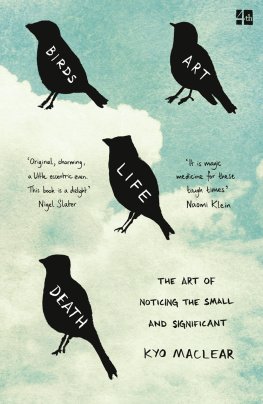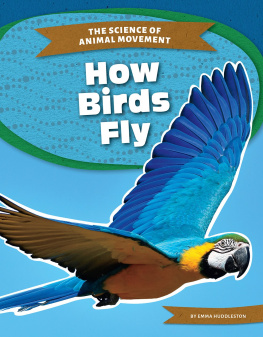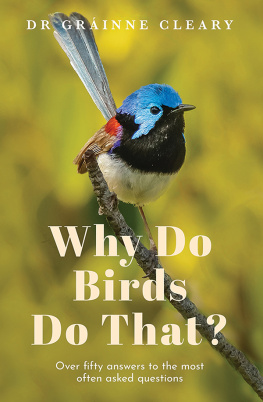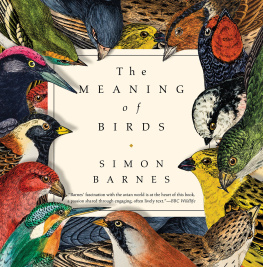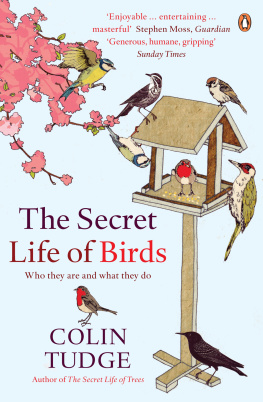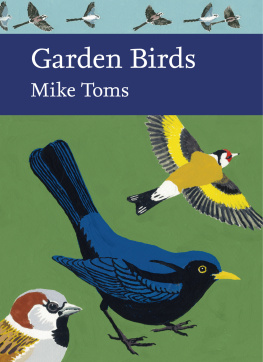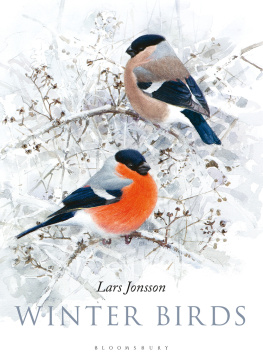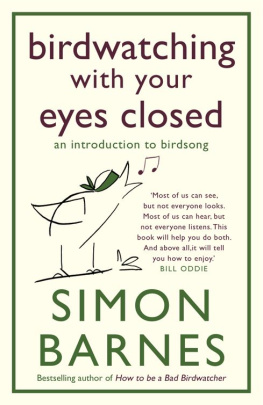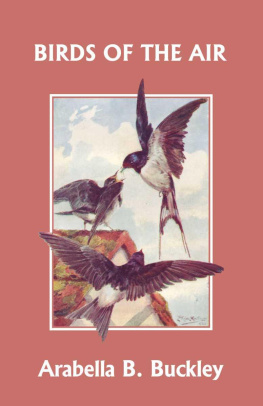Contents

Then there were the birds, which were suddenly everywhere. I could hear them in the trees and tucked in the eaves of our house: idle choirs chattering and trillingpretty songs and ugly songs, songs to pass the time. A hawk perched high above the ice rink while I was skating with my sons one afternoon. I spied a flock of migrating geese through a skylight while I did the backstroke in a YMCA pool. It moved like a giant cursor across the white flatness of the sky.
One evening I returned from visiting my father at the hospital and curled up on the couch in my composer-husbands studio. I reeked of Purell hand sanitizer and the sweat that comes from acting chipper. The studio was the most soothing place I knew. The walls were covered in blue fabric and hanging baffles. These baffles, made of wavy grey foam, were designed to eliminate echo and absorb sound. A floating floor further reduced impact noise. I melted into its womb-like comfort.
My husband played a track he had made for a movie, ghostly and piano-driven. I wore his hat, which I had pulled from his coat tree. I wrapped myself in a wool cardigan handed down from his grandfather and rested my feet on his thrift-store coffee table. He turned on the Swan Silvertones and filled my heart up with gospel handclaps and perfect harmonies.
Together we watched a rough cut of the film he was scoring. It was a documentary titled 15 Reasons to Live based on a book by a Canadian writer. The film was divided into fifteen stories, loosely representing the chapters in the book, and tackling the question of what makes life worth living.
For example, a chapter called Love followed a Quebecois man who found solace in walking around the world as he recovered from a mental breakdown. Body told the story of a man whose debilitating anger had led him to pursue the art of rock balancing. Halfway through, a thirty-something musician appeared in the segment titled Meaning. After years of wallowing in creative depression, he had quit drinking and found peace by birding in the city. I didnt even have to think about it. I just felt easier. I felt easy-hearted, he said.
He had discovered his joy was bird-shaped.
The musician was funny and had a smile that was very quiet. He came across as fervent about birds without being reverential.
Later that evening I looked at the musicians bird photographs on his website. It was an extensive and odd collection. They were not the sorts of pictures you would see on a greeting card or in a glossy bird calendar.
These birds lived in gardens of steel, glass, concrete, and electricity.
There was a bird with a plastic FROZEN MANGO bag on its face and another bird nested in a shattered light fixture. There were birds on tacky stucco walls, rebar bundles, giant forged nails, and wire fences. The birds were doing ordinary bird thingsperching, flying, preening, hunting, nest-buildingbut there was no doubt that they were of rather than above the mess and grit and trash of the world.
The message in the photos wasnt the usual one about environmental sins or planetary end times. The message, if it could be called that, was about love. It wasnt love for a pretty girl or a love that placed the beloved on a plinth or in a vitrine. It was not the kind of love that knocked you over, left you in a state of craven hunger, and gave you jittery bouts of insomnia. It neither idealized nor sought to possess. The love I felt in the photos was a love for the imperfect and struggling. It was a love for the dirty, plain, beautiful, funny places many of us call home.
My heart beat a little faster looking at them, at the birds and the space around them.
I had grown solitary while waiting for the world to quieten around a story. I had grown solitary as an only child of two aging immigrants who had fled their respective homelands for a continent devoid of family, who had drawn a strike-line through their histories, who sat on the land like two potted plants rather than trees in soil. I had grown solitary as a writer whose craft demanded my separation from others. Is that what I saw in the space around the birds? My own solitude?
I made contact with the musician and arranged to meet him for a bird walk. I wanted to be enraptured and feel I was still inspirable. I did not see nature as my own personal Lourdes or healing wilderness.
Or maybe I did.
Hello? the musician said, loping towards me with his heavy camera, a stout figure in layers of woolly brown. Hello? I replied. I was standing by a large duck pond on a cold but sunny December morning, exhaling cloudlets of breath. People walked by on the path with their dogs. Ducks waded past us on the water.
I had sudden misgivings. I felt shy. What had I been thinking?
The musician was a serious birder. I belonged to the vast numbers, satirized by Portlandia, who knew nothing about birds and thought mostly of them as a decorative motif. My house was a frivolous bazaar of nature-themed trinkets, from the prettiest handcrafted duck lamp to the usual menagerie of stuffed toys to our Anthropologie owl mugs. I lived in a state of unforgivable anthropomorphism. Anthropoapologetic. Thats what I was feeling.
What did I know of live birds? What did I know of the wild world, and what did it know of me?
I did not grow up picking berries by a river valley or clambering through dark, dewy forests or observing tide pools. I had many adventures as a child, but they did not involve the wilds of Canada. They involved casinos, international airports, and mammoth department stores.
My parents were devoutly metropolitan. My father was a London-born foreign correspondent, stationed in Tokyo when he met my Japanese mother, a demure, long-haired sumi-e artist who initially balked at my fathers immense height and skeletal bearing. Their courtship began at a Canadian Embassy party in a thick fug of cigarette smoke. He fell in love with her charm and prettiness. She fell in love with his worldliness and the promise of escape.
They married, and a couple of years later, work drew my parents to London, where I was born. And then another job drew them to Canada. An exotic cosmopolitan couple had suddenly landed in a quiet North Toronto neighbourhood. No Kensington High Street, no Shinjuku, just a thick blanket of snow. Just unidentified scampering animals and unfamiliar winged creatures. My father dashed off somewhere for work and my mother was left alone in a cold house. Quiet quiet, no noise except the birds outside, a choir on their way from or to elsewhere, birds thriving in their new territory. All those notes held in the cold air, the migrant songs, were not a comfort to my mother. Having lived through hardscrabble war years in the Japanese countryside, she had no fondness for nature. She liked busy downtowns, a thick cladding of civilization. She liked sashaying down the street in a miniskirt and heels, Rothmans cigarette in hand, and causing an uproar. My mother was beautiful and boasted she had, on various occasions, turned the heads of such men as Mick Jagger, John Lennon, and King Hussein. Toronto did not impress her. Instead of appreciation, my mother looked out her icy Canadian window and saw problems. What to do with all the fucking snow? What to do with the fucking gazebo?
Heres what she did. When spring came she dug up the entire backyard and installed a traditional Japanese rock garden, a carefully ordered and manicured landscape, which she raked with monkish regularity, clearing away Frisbees, badminton birdies, and baseballs that sailed over the fence from the park behind our house. If she had to have nature, she would have it her way: soft sprinkler-grown moss and carefully pruned Japanese trees. She did this every time we moved, creating four new rock gardens in seven years. Raking and raking her way to happiness.
Next page
